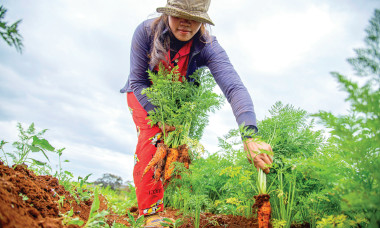Are you ready for Single Touch Payroll Phase 2?
What is Single Touch Payroll?
Single Touch Payroll (STP) is a payroll reporting system introduced by the Australian Taxation Office (ATO) back in 2018. Originally for employers with 20+ employees, it was extended to cover all employers in 2021. There have now been over 13 million employees’ payroll information reported via STP.
The introduction of STP provided government with greater visibility while also reducing reporting burdens on business such as Payment Summary production and lodgements.
With the ATO starting up their compliance program again post pandemic, it is more important than ever for employers to have a compliant payroll solution, which can accurately report STP information to the ATO in a timely manner or face possible lodgement penalties.
Why Single Touch Payroll Phase 2?
Single Touch Payroll Phase 2 delivers more granular information to the ATO, who will now share that data with other Government agencies. This additional data sharing is designed to further reduce the compliance burden on businesses and employees, whilst also allowing Government agencies to identify possible errors early, ensuring individuals are not over paid and as a result end up in financial stress having to repay funds.
Businesses gain by no longer having to:
- Lodge separate Individual Tax Declarations to the ATO
- Lodge Child Support Payment information to Services Australia
- Provide Separation Certificates to employees departing their business
- Lodge separate EOFY reporting for international payroll employees
Individual employees gain by:
- Having detailed information prefilled into their Tax returns
- Reduced time to gain benefits via Centrelink & Services Australia
- Benefits updating sooner so unexpected debts are less likely to occur
Government benefits by:
- Being able to understand the economy sooner, and
- Reduced debts outstanding via Centrelink & Services Australia.
What’s changing/new?
Reporting country codes
Newly introduced in STP Phase 2, a country code for Working Holiday Makers and International Payroll employees (Inbound & Outbound). This country code allows the ATO to understand exactly how much an employee should be taxed based on the country involved and the international taxation treaties in place.
Disaggregating of gross (Salary Sacrifice agreement)
Gross in STP Phase 2 is no longer the net value of a wide collection of different payments and deductions in your payroll. Instead, gross is now just items that relate to Ordinary time earnings.
Salary Sacrifice, Overtime, Bonus & Commission as well as Director’s fees will now be reported separately to allow Centrelink and Services Australia to accurately determine payment amounts to individuals or Child Support liabilities.
Allowances
Allowances under STP Phase 2 have been extended to additional categories, as well as having some existing categories renamed to reduce errors that were occurring under STP Phase 1. For example, “Car” renamed to “Cents per KM”.
These changes to allowances now align better to both tax and superannuation treatment.
Leave
A new break down under STP Phase 2 is the payment of Leave to an employee. This now classifies information into “Leave Cashed Out” vs “Other Leave taken” as well as some categories government has been interested in around Parental Leave & Ancillary Leave.
How are we helping businesses to transition to STP2?
Within Workforce Solutions, we exist to ensure that employers have the right people in the right jobs at the right time being paid right. We do this in the scope of our values - being ready to put people first, ready to do the right thing, ready for change and ready to do the work.
From January 2022, we’ve started to release updates to our products to improve the way that STP information is reported to the ATO and government.
To find out more about STP 2 or to speak to an expert to learn more about how to transition – get in contact.






